13 Jan Wise Brain Bulletin: Volume 11.6
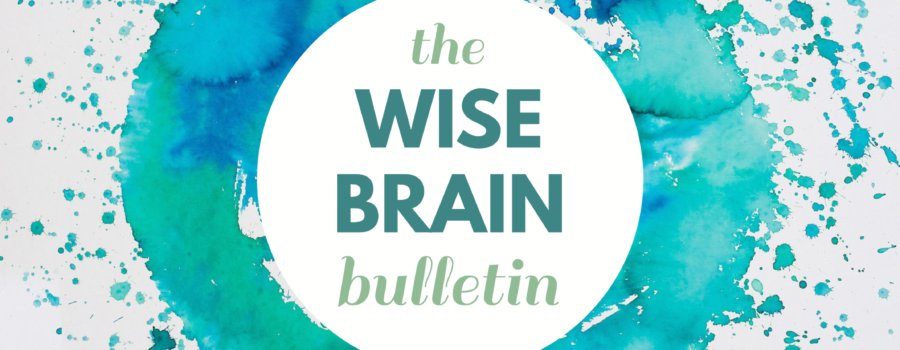
An Introduction to NeuroMeditation
 © 2017 Jeff Tarrant, Ph.D., BCN
© 2017 Jeff Tarrant, Ph.D., BCN
Research shows that meditation is beneficial for a range of mental health concerns and that it can significantly change the structure and function of the brain. Yet, despite this knowledge and increased accessibility to meditation training programs, it remains a significant challenge for many individuals to maintain a consistent practice. Beginning meditators frequently discontinue their practice before realizing any significant benefits and it is not uncommon to hear comments like:
“I don’t know if I am doing it right.”
“I tried to meditate once, but couldn’t quiet my mind for even a second”
“I can’t sit still long enough to meditate”
“I don’t have time”
“How is just sitting here supposed to help me?” or
“I don’t know where to begin”
It seems we need a process of learning and talking about meditation and mindfulness that addresses these concerns. In an ideal scenario, this process would be efficient, secular, provide specific tools, and offer the ability to match a particular individual to a specific form of meditation based on their goals and concerns. I am using the term “neuromeditation” to define this process. NeuroMeditation attempts to meet the needs identified above by combining current scientific understandings of the brain and consciousness with ancient wisdom practices. The result is an approach to meditation that meets the needs of both the left and right hemispheres of the brain and supports increased motivation and more consistent practice by early meditators.
NeuroMeditation Defined
NeuroMeditation is the application of brain-based principles to meditative practices.
This method of teaching meditation begins with a scientific understanding of what happens in the brain during different meditative states and why each of these practices might be beneficial for specific individuals. In this way, we can help students/clients identify a starting point based on what they are trying to achieve. What is their motivation for meditating in the first place? Is it to reduce stress and anxiety, minimize pain, improve sleep, or work toward spiritual enlightenment? What teachers and clinicians need is the ability to match an individual to the meditative style that will more effectively help them achieve their goals.

The 4 Styles of NeuroMeditation
Through advances in neuroscientific research, we now know a great deal about the effects of meditation on the brain. Because of this, we can now state with great confidence that “all meditations are not created equal.” Different styles of meditation require different ways of paying attention, different intentions and involve different activation/deactivation patterns in our neural networks. Based on this knowledge, we can roughly categorize meditation into 4 styles.
FOCUS
Focus meditations involve voluntary and sustained attention on a chosen object. An example of this type of meditation would include concentration practices that require the meditator to maintain attention on a single object, such as the breath, a part of the body, a strong visual image, or a word or phrase (Travis & Shear 2010). When the attention wanders from this object, the goal is to recognize this as soon as possible and return attention to the original focus. Studies examining brainwave patterns during Focus forms of meditation have found increased communication between the front and back of the brain in the gamma frequency as well as increases in gamma and Beta2 (20-30 Hz) activity in regions of the brain associated with sustaining attention and regulating thoughts or emotions (Anterior Cingulate Cor tex-ACC).
Focus strategies may be most helpful for people struggling with cognitive issues such as attention, working memory, or distractibility. If you consider the practice of Focus in relation to ADHD symptoms, the connections become obvious. In Focus practice, you are asking someone to hold their focus in one place, recognize when they become distracted, and then return their attention to a single focus as quickly as possible. This is exactly what we want persons with ADHD to be able to do in daily life. In addition, the brainwave activation patterns observed in Focus forms of meditation are the perfect antidote for the stereotypical slow brainwave patterns seen in ADHD.
CHOOSING A NEUROMEDITATION STYLE: FOCUS
If the lists below are consistent with the goals or concerns of the beginning meditator, Focus practices may be a good fit.
Goals
• Reduce distractibility
• Increase sustained attention
• Reduce mind wandering
• Improve concentration and focus
• Increase self-monitoring
• Improve cognitive self-awareness
• Develop mental stability
Mental Health Targets
• ADHD
• Cognitive decline in elderly
• Mild traumatic brain injury
• Memory problems
MINDFULNESS
Mindfulness meditation often does not involve an explicit attentional focus. Typically, it is characterized by an open presence and a non-judgmental awareness of sensory, cognitive, and affective experiences as they arise in the present moment. The handful of research studies examining EEG activity during Mindfulness meditation practice consistently reports increases in frontal theta power as well as increased frontal theta communication.

This is important because theta is a slow brainwave and may serve as a counter-balance to the typical fast brainwave activity observed in persons experiencing chronic stress or anxiety. Previous research has established that persons demonstrating greater theta activity tend to have lower state and trait anxiety scores (Inanaga 1998). Not surprisingly, increased frontal theta during meditation has been associated with decreases in both state and trait anxiety levels (Shapiro, Jr. 2008; M. West 1987). A comparison study, examining the EEG signatures of a Concentration meditation versus a Mindfulness meditation found that the Mindfulness practice was associated with higher levels of frontal theta, suggesting a quieting down of these regions (Dunn et al. 1999).
CHOOSING A NEUROMEDITATION STYLE: MINDFULNESS
If the lists below are consistent with the goals or concerns of the beginning meditator, Mindfulness practices may be a good fit.
Goals
• Learning to let go
• Creating distance from thoughts, feelings and behaviors
• Reducing judgment
• Increasing awareness of bodily states
• Increasing awareness of, and regulating emotional states
• Calm awareness of present moment
Mental Health Targets
• Anxiety
• Chronic stress
QUIET MIND
Meditations in this category involve dropping below the level of conscious thought into spacious awareness. Most research involving this style of meditation has focused on the practice of Transcendental Meditation (TM;Travis & Shear 2010). On the surface, TM appears to be a Focus meditation due to the attention on a mantra. However, the actual practice reveals that it is a technique for transcending its own procedures; moving from a state of sustained attention to mental silence (Yogi 1997). This type of meditation has been studied extensively and consistently results in increased alpha1 (8-10 hz) power and communication (Travis & Shear 2010).
Alpha1 (8-10hz) is a slow brainwave pattern and is characterized by an internal orientation that is non-active. In essence, when there is an abundance of alpha1 in a particular brain region, there is not much happening in that moment. One of the brain regions consistently impacted by Quiet Mind practices is the Default Mode Network (DMN). The DMN is involved in creating our sense of self-our identity. When we engage in Quiet Mind meditations, this region of the brain becomes quiet and for a short time, we are not obsessing about ourselves. For this reason, Quiet Mind protocols may be ideal for psychological disorders involving disruptions in a sense of self. In the individual with a distorted identity, quieting the illogical perceptions of self allows for a broader perspective which is beneficial in the development of a healthy ego. While potentially helpful for a whole host of issues, this form of practice may be ideal for conditions related to a lack of cognitive exibility – a tendency to get stuck on certain self-perceptions, conditions such as eating disorders, obsessive-compulsive disorder, or personality disorders.
CHOOSING A NEUROMEDITATION STYLE: QUIET MIND
If the lists below are consistent with the goals or concerns of the beginning meditator, Quiet Mind practices may be a good fit.
Goals
• Non-attachment
• Quiet the mind
• Minimize internal self-talk
• Non-striving
• Creating distance from the ego-mind
• Restful alertness
Mental Health Targets
• Chronic pain
• Personality disorders
• Obsessive-compulsive disorder
• Substance abuse
• Eating disorders
OPEN HEART
Lovingkindness and other compassion-based meditative practices (Open Heart) involve the activation of a positive feeling state and a focus of attention on an “unrestricted readiness and availability to help living beings” (Lutz et al. 2004). Research examining changes in brainwave activity of experienced and novice meditators engaged in Open Heart meditations from a Tibetan tradition have shown significant increases in gamma wave communication from front to back regions of the brain as well as increased gamma power in a range of specific brain regions (Lutz et al. 2004). Gamma is the fastest brainwave to which we generally pay attention. It is also activated during Focus practices, but in slightly different brain regions. Gamma is important because it seems to increase in moments when the brain is able to effortlessly synthesize and integrate complex information, a bit like being in a flow state.
One area of the brain that shows this increased gamma activation during Open Heart practices is the left prefrontal region. Decades of research indicates that people who are depressed, ruminative, and have a negative orientation tend to show increased activation in right frontal regions of the brain. People who are relatively happy, optimistic, and approach-oriented, tend to show increased activation in left frontal regions. The fact that Open Heart practices have the ability to shift power from the right to the left is great support for its use in the treatment of mood related concerns.
Open Heart practices, with an emphasis on establishing positive affect and empathy toward others, and the ability to shift frontal brain activation patterns may be ideally suited as an intervention for depression, grief, and relationship issues.
CHOOSING A NEUROMEDITATION STYLE: OPEN HEART
If the lists below are consistent with the goals or concerns of the beginning meditator, Open Heart practices may be a good fit.
Goals
• Improve mood
• Increase empathy
• Increase gratitude and appreciation
• Opening the heart
• Perspective taking
• Increase generosity
Mental Health Targets
• Depression
• Grief
• Personality disorders (empathy)
Choosing a NeuroMeditation Style
Having read through the brief descriptions of each of the 4 NeuroMeditation styles, the goals with each, and the mental health conditions targeted, you may already have a clear sense of which practices may be indicated for yourself or others.
In some cases, this will be the only criterion you will need to identify a NeuroMeditation style. However, other cases are not so obvious. For instance, what if someone does not have a clear “diagnosis,” is interested in peak performance, or has multiple areas of concern that overlap between NeuroMeditation styles?
Most, if not all, of my clients or students are entering into meditation practices because they have a specific goal in mind. They want to be less depressed, sleep better, or have less pain. They may have picked up a magazine somewhere and read that meditation or mindfulness can help them feel better. In these instances, guiding them toward specific practices that can help them reach their goals more efficiently just makes sense.
If the identified goals and mental health targets for each meditation style do not provide enough clarity, the NeuroMeditation Styles Inventory (NMSI) questionnaire provides a means for beginning meditators to more carefully consider their own goal(s) and gain a sense of which style(s) may be best suited for their specific needs. You can find a web-based version of this survey at www.NeuroMeditationInstitute.com under the tab labeled “Learn.”
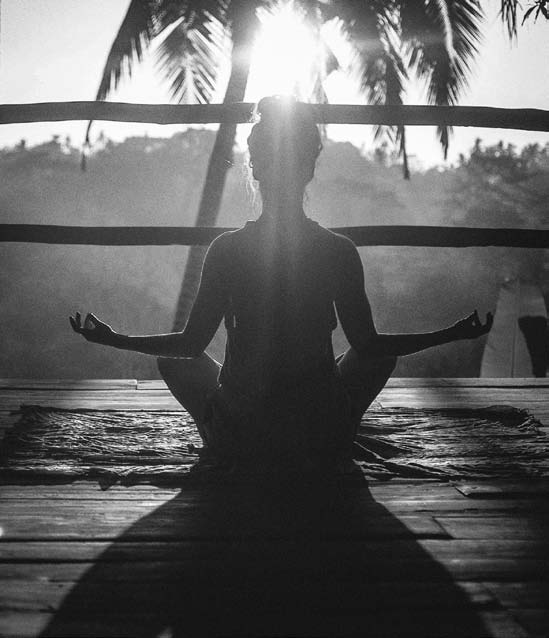
WHAT IF SOMEONE FITS INTO MULTIPLE NEUROMEDITATION STYLES?
Even though there are several tools available to help you identify which style may be the best for a particular individual, there will undoubtedly be times when someone seems to perfectly fit into multiple categories. What then?
- If a client or student is relatively new to meditation, beginning with a Focus practice is usually a safe bet. This is a great starting point and a powerful tool to stabilize the mind. In addition, Focus practices are a necessary prerequisite for any of the other styles of NeuroMeditation.
- Many meditation practices are a combination of several of the forms outlined here. Using a style that combines styles may be a good fit for someone who does not “neatly” fit into one category.
- It’s also perfectly reasonable to try a variety of meditations and pick the one that the individual is most likely to practice. All forms of meditation are potentially beneficial. If there are no compelling reasons to stay with one particular form, it may make the most sense to work with a style that has the highest likelihood of follow through.Develop a plan for having the client or student try different meditation styles, each for several weeks. Have them pay close attention to the effect of each, and use this as data gathering to make a more informed choice.
In this article, I have classified meditations based on four distinct styles and their impact on the brain. This is a useful strategy for considering how, why, and when you might utilize specific practices.
Also, by understanding the intention behind each NeuroMeditation style you can begin to explore and experiment with ways that each of the 4 styles might work together. They do not need to be mutually exclusive. They are presented as distinct methods for clarity and to help beginning meditators choose a style that best suits their needs and goals.
To learn more about the 4 styles of NeuroMeditation and to explore a variety of tools, techniques, and strategies for facilitating each of these styles, check out www.NeuroMeditationInstitute.com or my book, Meditation Interventions to Rewire the Brain: Integrating Neuroscience Strategies for ADHD, Anxiety, Depression, & PTSD.

REFERENCES
Dunn, B., Hartigan, J., & Mikulas,W. 1999. Concentration and mindfulness meditations: Unique forms of consciousness? Applied Psychophysiology and Biofeedback, 24(3),147–165.doi:10.1023/A:1023498629385
Inanaga, K. 1998. Frontal midline theta rhythm and mental activity. Psychiatry and Clinical Neurosciences, 52(6), 555–66. doi:10.1046/j.1440-1819.1998.00452.x
Lutz, A., Greischar, L. L., Rawlings, N. B., Ricard, M., & Davidson, R. J. 2004. Long-term meditators self-induce high-amplitude gamma synchrony during mental practice. Proceedings of the National Academy of Sciences of the United States of America, 101(46), 16369–16373. doi:10.1073/pnas.0407401101
Shapiro, Jr., D. H. 2008. Meditation: Self-regulation strategy and altered state of consciousness.
Travis, F. & Shear, J. 2010. Focused attention open monitoring and automatic self-transcending: Categories to organize meditations from Vedic, Buddhist and Chinese traditions. Consciousness and Cognition, 19, 1110-1118.
West, M. 1987. The psychology of meditation. New York, NY: Clarendon Press/Oxford University Press.
Yogi, M. M.1997. Celebrating perfection in education. Maharishi Vedic (2nd ed.). Noida, India: Maharishi Vedic University Press.
A Love Story
© 2017 Jeanie Greensfelder
Gather your selves:
critical and kind,
scared and brave,
thoughtless and hurt.
Mistakes and failures
meet accomplishments.
Like loss and love,
they are a package.
Embrace it all.
Such a coming together
is what we came for.

Simple Tips for a Stress-Free Holiday
Editor’s Note: The holidays are a time of year when our stress-levels tend to rise, despite our desire to enjoy the season and the people in our lives. So I’d like to offer you a few simple tips for taking care of your body, emotions, thoughts and actions, to minimize holiday stress this season.
In your body, take l-o-n-g exhalations, relax the tongue, warm the hands (or imagining that they are warm, like holding a cup of cocoa), and relax the body as a whole, to reduce your fight-or- flight, stress response.
In your emotions, keep turning to the small positive experiences available during the holidays (and during life in general): for example, decorations are pretty, oranges smell good, it’s fun to go sledding, kids are cute, and it feels sweet to make others happy. Then take a dozen seconds or more to savor the positive experience so that it can transfer from short-term memory buffers to long-term emotional memory, and thus really sink into you.
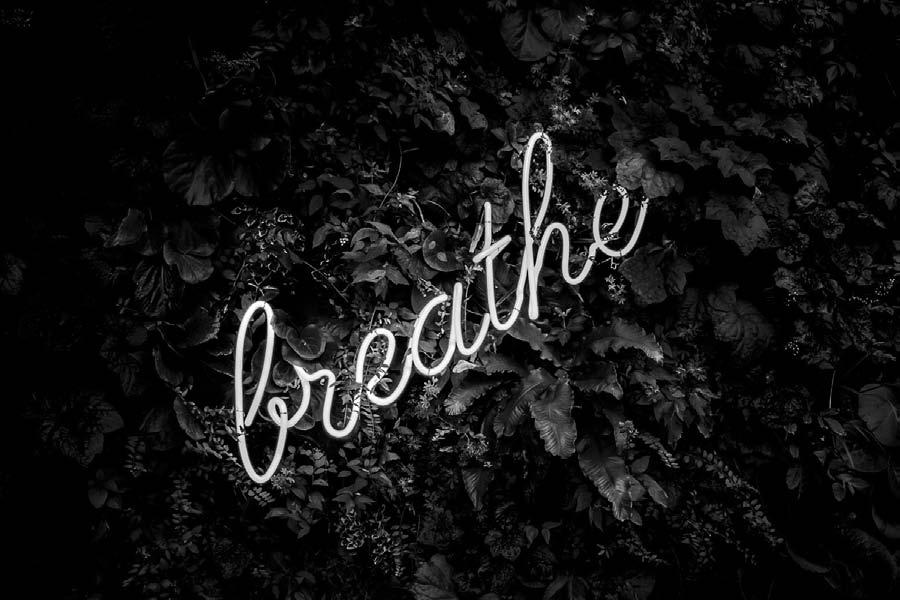
In your thoughts, beware “shoulds” and “musts.” The things we do during the holidays are only means to ends: goals such as happiness, love, sacredness, generosity, and fun. If the means get in the way of the ends – as they so often do at this time of year – it is time to lighten up about the means. Keep coming back to simplicity inside your own mind as an end in itself: the simple truth that in this moment, each moment, you are actually basically alright; the simple fullness of being in the present, not regretting the past or worrying about or planning the future.
In your actions, slow down and do less. Keep coming back to your breathing as you look for gifts, do dishes, wrap presents, or visit friends. Don’t let others rush you. Be kind; cut others slack; this time is probably stressful for them also. Don’t try to have the perfect Christmas, Hanukkah, whatever. Don’t go nuts with presents. There are other gifts that can be the biggest ones of all: like giving the gift of your full attention to others, rather than being distracted by your to do list; or the gifts of forgiveness, gratitude, and wholeheartedness.
And lastly, remember that the practices of thought, word, and deed that lead to sanity during the holidays are a pretty good way to live year round!
A Meditation on Gratitude
© 2005 Rick Hanson, PhD
Set aside a quiet time during which you can reflect on some of the many things you could be thankful for. As a starting point, you might read the passage below to yourself or out loud, adapting it to your situation as you like.
There really is so much to be thankful for.
I am grateful to my friends. For their good qualities, for the good things they have done for me. For the ways they are fun, for the good times we’ve had.
I am grateful for my children – if I have any – for the delight and love they bring, for the sweet smell of their hair and the soft touch of their skin. For the first time they smiled at me or walked into my arms. For the meaning they bring to life. For receiving my love and lessons. For being their own persons, for giving me their own love and lessons. Having them at all is a miracle, and the rest is details.
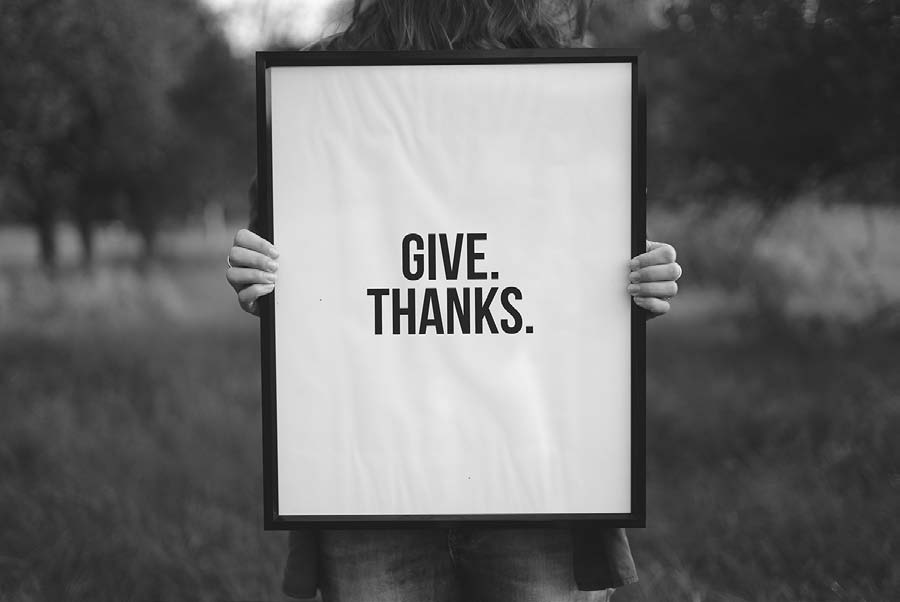
I appreciate myself. For the love I have given to others, for all the conversations had, for all the helpful acts toward others, for all the dishes done. For the long hours I’ve worked, the hoops I’ve jumped through to keep all those balls up in the air. For the efforts I’ve made, the many times I’ve stayed patient, the many times I’ve found more to give inside when I thought I was empty.
I appreciate my lovers and mates, past and present. I can focus on one of these persons, perhaps my spouse or mate if I’m currently in a relationship, and bring to mind the ways he or she has been good to me. I appreciate the fun we’ve had together, the humor and the companionship. I feel grateful for the times of support, understanding, and sympathy. For sweating and suffering too.
I feel thankful for the life I’ve already had, for the good parts of my childhood, for everything I’ve learned, for good friends and beautiful sights. For the roof over my head and the bread on my table, for being able to have a life that is healthier, longer, and freer than most people have ever dreamed of. For this beautiful world, where each breath is a gift of air, each dawn a gift of light. For the plants and animals that die so I may live. For the extraordinary gifts of evolution I carry in each cell of my body, for the capabilities accumulated during three and a half billion years of life’s presence on our planet.
I feel thankful for the wonder of the universe, for all the atoms in my body—the carbon in my bones, the oxygen and iron in my blood—that were born in the heart of a star billions of years ago, to drift through space, to form a sun and planets, to form the hand that holds this piece of paper and the eye that reads this word.
I feel thankful for all that was in order for me to be. For grace, for wisdom, for the sacred, for spirit as I know it. For this moment, this breath, this sight. For every good thing that was, that is, that ever will be.
Treasure Beyond Measure
 © 2017 Stephanie Noble
© 2017 Stephanie Noble
Have you ever gone on a Scavenger Hunt? This one has a big reward, a treasure beyond measure — definitely worth doing! Most scavenger hunts have you go about town looking for things, but for this scavenger hunt we will stay seated and use our imaginations.
Scavenger Hunt Instructions
Close your eyes and think about objects right where you are or in other places in your life — whatever comes to mind. Bring one to mind. Got it? Okay, now see if it depends on anything else to exist. If so, move on to another object. You are looking for something that came into the world completely of its own accord.
When you find something that doesn’t depend on anything else — or if you just give up — open your eyes. But really give it a try before going on. After all, there is a big reward!
Okay, did you find anything? If you did, look more closely. Ask more questions: Did anyone make this object? What material is it made of and where did that come from? What about the chemical composition of the object or even an element, in case you thought of something elemental?
If you couldn’t find anything that didn’t depend on anything else for its existence, then congratulations! You win the big reward. Your reward is a powerful realization with many benefits that I will explore here. But know that you have discovered for yourself a central point of awakening, one that the Buddha discovered for himself one time when he was staring at a leaf.
Nothing Exists Alone
In his contemplation of the leaf suddenly he saw within it the presence of the sun and the stars. This was not a hallucination but a realization about the nature of being. Without the sun’s light and warmth the leaf could not exist. He recognized how the leaf manifested from a myriad of causes and conditions. Without those causes and conditions, the leaf would not exist. He realized that what was true for the leaf was true for everything and everyone: This is like this because that was like that. And if there was not that, then there would not be this.
He shared his realization and called it “dependent co-arising.” Nothing exists alone. Everything is because something else was. Let’s just stay with that for a moment…

Think of your own being and what it depends on. You are as you are because of all the natural phenomena that have formed you and sustained you physically: to start let’s acknowledge the whole ongoing coming together of legions of ancestors so that eventually here you are, the result of innumerable causes and conditions being just so at particular moments in time. Imagine if your mother had had a headache the night you were conceived! What if just one of the string of couplings throughout generations of your family never occurred? You get the picture: this miracle of being YOU is nothing to take for granted, clearly! You might say it’s a total fluke that you are here but it’s not a fluke really. The manifestation of your existence in this form at this time is an intrinsic part of the whole ongoing process of life unfolding, the interplay of all those causes and conditions.
It’s so easy to see this once we take a moment to think about it. Just on your person in this moment are the products of all manner of plants, perhaps animals and minerals and human labor, as well as the sun, soil, and rain that sustained them all! Just think about that! Your clothing, whatever you have in your pockets or your purse, maybe your eyeglasses — all of it exists because of the existence of something or someone else. So that on your person right now, the whole universe is represented.
This is not just the product of living in society, though it may be easier to see it there. Even if you lived on a mountainside in a cave you would still be dependent on the elements and the berry bushes and the mountain stream. You would still be someone’s child, even if estranged. There is no way to cut ourselves off from “all that is” because we are each inseparable parts of all that is. There is no way to exist in complete isolation for anyone. There is dependent co-arising, and there is this ongoing interdependency of all life.
Consider this the next time you pride yourself on being independent. Or perhaps gently mention it the next time someone claims they pulled themselves up by their own bootstraps — whatever the heck that means! Recognizing our interdependence can soften harsh judgments, soften hearts, and clarify thinking. There is no “us” and “them.” It is all us – all of us – without anything that is not us from here to infinity. Knowing this to be true, we naturally become more compassionate, more generous, more loving. Understanding this, can we see more clearly the actions of others? Can we see how unskillfulness in actions and words, while not necessarily inevitable, are certainly understandable given certain causes and conditions?
Existence
Now thinking about that leaf that the Buddha held in his hand, we come to a second aspect to contemplate in this dependent co-arising. We can ask when this leaf was born. Most of us have at one time or another noticed a leafing forth on a plant. But none of us would ever be able to pinpoint the very moment when the leaf suddenly begins to “exist.” The leaf was inherent in the tree, the tree inherent in the seed and its relationship with the soil, the rain, and the sun, and perhaps the hand of a person who purposely planted it, or the bird who deposited it there.
Think of the leaf. Does the leaf’s death occur when it falls off the tree? It still exists, doesn’t it? We know that full well if we are tasked with raking or sweeping leaves. The leaf is still involved in the cycles of cause and effect. It dries up and disintegrates. Interacting with the sun, the rain, and the wind it breaks down to become part of the soil, thereby nourishing new life. So there is no moment when the leaf dies nor a moment when it was born. It is in an ongoing interaction of elements, manifesting in different forms.

Why is this important?
Because when we look at our own human lives, we typically get caught up in a very constricted idea of life. We define it with a clear beginning and ending: birth and death. And then we struggle with that finite definition, especially with death. It doesn’t sit well with us. And there’s a reason it doesn’t sit well: because it isn’t true. There is a moment when we take our first breath – but did we not exist already in the womb? And before conception were we not inherent in the bodies of our parents, and the gleam in our father’s eye? Birth is not the beginning. It is entwined completely with all that came before that moment.
There will be a moment when we take our last breath. At that moment do we suddenly disappear? No! That moment is not the end, neither for our bodies nor for our being and the impact we have made and will continue to make on others even though we may no longer have form, consciousness, or volition. Existence is not so cut and dried.
Lately I’ve been doing a lot of paring down, and one project that loomed large but turned out to be not a big deal, was taking all the old family home movies and videos and converting them to digital so that they would take up less space and be able to be shared with everyone, because no one in the family has an 8 mm projector, and few have DVRs. Some of these recordings I hadn’t seen since I was a child or a young mother, and they were fun to watch. But there was one I just wasn’t ready to see.
My mother died in 1989, and although of course her photos have been around and enjoyed all these years, I just had never worked up the courage to watch a videotaped interview of her that I discovered among her things. I was afraid it would just be too difficult for me to see her gestures and hear her voice so I managed to put it off for coming up on three decades. Then, when her two beloved granddaughters were visiting, the three of us decided we would watch it.
There she was, and there we were, her offspring still resonating, still feeling the presence of her being, while we watched her mannerisms and listened to her voice. Yes she was gone and we missed her, but each of us had some part of her that had been with us every day in little ways, and clearly we would not be who we are without her. Even if she never had children, nieces, nephews and friends also have been touched by her. She made a big difference in many people’s lives. So death may be the last breath, but it is not the last of any of us. We all go on and on, continuing to make an impact on all whose lives we have touched, and those whose lives they have touched – rippling out and out, and on and on.
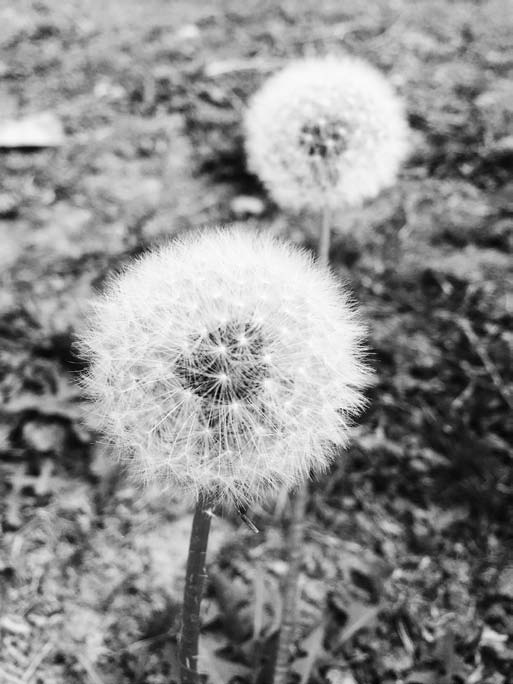
Have you ever noticed on a clear blue day when suddenly a small cloud appears, as if out of nowhere? Was the cloud born? No, it existed as moisture in the atmosphere, but because of the wind or other elements, it coalesced and became visible to our eyes. But it was already there, inherent in the sky.
The cloud like everything else manifested out of transforming causes and conditions. This is like this because that was like that. Clouds are not born and they do not die. And neither do we!
We are like this because that was like that. When the Buddha recognized this he found it very freeing, this seeing our inherent ongoing nature of dependent co-arising. A student of mine shared how this knowledge made her feel much lighter. And that made me recognize that this insight does lighten the “burden of being” that we tend to carry, when we could instead be dancing with the brilliant patterns of being! See what effect this insight has on you.
For long time students of Buddhism who are familiar with the term “dependent co-arising” there can be a habit of seeing this only as dogma, a dry doctrine, something to grasp philosophically, as if there’s going to be a test. But there is no test. In fact, the Buddha was very much against anything he taught being received as some doctrine to be learned. He taught how to be joyful through mindfulness. So let go of any struggle around grasping at this dependent co-arising – there is only the joy of discovery that’s possible when we see the truth of it. Choose any object and see how it is like this because that was like that. There is no thing that exists on its own.
Impermanence
The next reward of recognizing dependent co-arising is realizing that it can only happen because there is impermanence. How we humans struggle with impermanence! Oh, things used to be better back in the day. Oh, look another wrinkle. But impermanence is not a necessary inconvenience that we must accept. It is imperative to life. We fear change so much, and yet it is the inherent nature that creates everything in our experience! Yay, impermanence! We would never exist without it!
When we see this, we see that there truly is no separate self, that we are ongoing, ever- evolving patterns of being, coming together, manifesting in one form or another, falling apart, transforming, always in a state of becoming, always dependent on what has been, and co-creating what will be.
Why does this matter? Because, as the Buddha defined it, denying the value of impermanence and believing ourselves to be separate from all beings, are the root causes of suffering. Our clinging to youth, fear of death, grasping for recognition and love and security – all come from the denial of the basis of all life: because that exists, this exists. This is as it is because that was as it was. Dependent co-arising.
Throughout this coming week, return to that idea, and check out this dependent co-arising for yourself. Standing in line at the grocery store, instead of being impatient to get somewhere else, take that moment to notice how everything on the counter being scanned exists because of many other things. Include every element, every aspect, and every person who contributed to that product and you will discover the sun and the stars at the checkout stand. And you won’t be hallucinating!
Understanding how nothing exists independently and how everything is interdependent, can we set the intention to co-create a world of joy, peace, love, and kindness? Can we cultivate lovingkindness and compassion for ourselves, then radiate it out in ripples to all beings everywhere? This is not some grand scheme. This is a simple choice to practice meditation, self-inquiry, awareness, spaciousness, and compassion. This is wise intention! Furthermore, if we make a genuine effort to live with loving awareness in all our interactions, this ripples out in all directions and through generations to come.
We have the capacity to choose how this manifestation evolves, how we can radiate the joy that is manifested in our practice for the benefit of all beings. As our understanding deepens, our ability to manifest joy grows exponentially.
Now wasn’t that rewarding?

Skillful Means
Your Skillful Means, sponsored by the Wellspring Institute, is designed to be a comprehensive resource for people interested in personal growth, overcoming inner obstacles, being helpful to others, and expanding consciousness. It includes instructions in everything from common psychological tools for dealing with negative self talk, to physical exercises for opening the body and clearing the mind, to meditation techniques for clarifying inner experience and connecting to deeper aspects of awareness, and much more.
Easy Rest
Purpose/Effects
Easy Rest is an excellent introduction to Vipassana (or “insight”) meditation. Easy Rest is very good for people who have never meditated before, because it focuses on pleasant experiences. It will bring an immediate sense of calmness and clarity (like you might get from a shamatha technique), yet will simultaneously build the core meditation skills of concentration and equanimity. Repeated practice of Easy Rest 20 minutes every day for even a few months will bring a marked positive change in your level of stress, anxiety, or depression.
Method
Summary
Alternate between noting “Blank,” the darkness behind your closed eyes, and “Relax,” any sense of relaxation in the body.
Long Version
In the Easy Rest technique, you allow your attention to move back and forth between two soothing experiences that can be easily found or created, hence the name Easy Rest. The two experiences are Blank and Relaxed.
- Blank means the background field of darkness/brightness that you see in front of/behind your eyes after you close them. For most people this takes the form of a marbled mixture of dark patches, bright patches and grays. But for some people it tends to be more pure darkness or more pure brightness (hence the description darkness/brightness). This background field represents a blank mental screen—something you can focus on to clear your mind.
- Blank is nothing special or fantastical. It is just what you see when you look at the inside of your closed eyelids, nothing more.
- Relaxed is just an abbreviated way of saying “physical relaxation.” Relaxed refers to any level or any spatial extent of muscle relaxation as well as any sense that you are physically settled into your posture. Notice that, by this definition, you don’t need to eliminate all tension, discomfort or agitation in order to experience being relaxed. Something as simple as dropping your shoulders will create enough to focus on. Do not struggle to create a large amount of relaxation, or worry that you are not “relaxed enough.”
- To do Easy Rest, close your eyes, settle into your posture and let your attention freely oat between Blank and Relaxed. If both of these restful states are present at the same time just choose one to focus on for that moment (to keep things simple). It doesn’t matter which one. As you note these restful states, other sensory experiences will probably occur – mental images, internal talk, external sounds, and physical or emotional body sensations. It is of the utmost importance that you not try to get rid of or shut out those experiences. Let them happen in the background while, in the foreground of attention, you are fascinated with and enjoying the restful states. This is usually not difficult because restful states are by nature pleasant and interesting.
- Noting: You can get added benefit from Easy Rest by doing it with “noting.” Noting is a Vipassana technique that means to label your experience. For example, when you concentrate on Blank, you mentally say the word “Blank” to yourself. In the same way, when you focus on the Relax sensations, you mentally say the word “Relax” to yourself.
Noting is a strong aid in developing concentration. The labels help you to keep your attention on the Blank and Relaxed sensations. Noting can be used in many other Vipassana techniques as well, so it is a useful skill to develop.
Here are some hints to make your noting more effective:
- First, always use an extremely calm, soft, gentle (mental) voice when noting. Talk to yourself in a voice that a mother might use when softly waking a baby. You want to be very gentle with yourself.
- Second, maintain a slow, even pace when noting. You should not be noting more than once every few seconds. No matter how much is going on, consider this one label every few seconds to cover all that has happened during that time. It is crucial that you not allow your noting to become frantic, hectic, or impatient.
- Third, use noting as part of a sequence or “rhythm” of attention. For example, in one “round” of this rhythm of attention, you notice the Blank, then make the label Blank, then actually concentrate on the blank for 3-5 seconds. Then you repeat the sequence. This is a very effective way to concentrate.
History
This technique is a kind of Vipassana (or “insight”) meditation based on the teachings of Buddhism.The language and format of this specific practice come from the teachings of American Buddhist master Shinzen Young. You can learn more about his many techniques at Basic Mindfulness.
Cautions
Some people find meditating on their bodies to be unsettling at first. If you are having this experience, then just meditate on Blank and leave the Relaxed for another time.
Notes
Blank and Relaxed are naturally present anytime you close your eyes and settle into a posture, whether standing, seated, or lying down. In fact, relaxation can even be experienced as you move around if you “relax into the movement.” Indeed relaxing into a movement is the essence of grace. If you can consciously tune into the actual sensation of relaxing into your movements you can experience a kind of bliss as you go about ordinary activities.
SEE ALSO

Fare Well
May you and all beings be happy, loving, and wise.



 ©
©